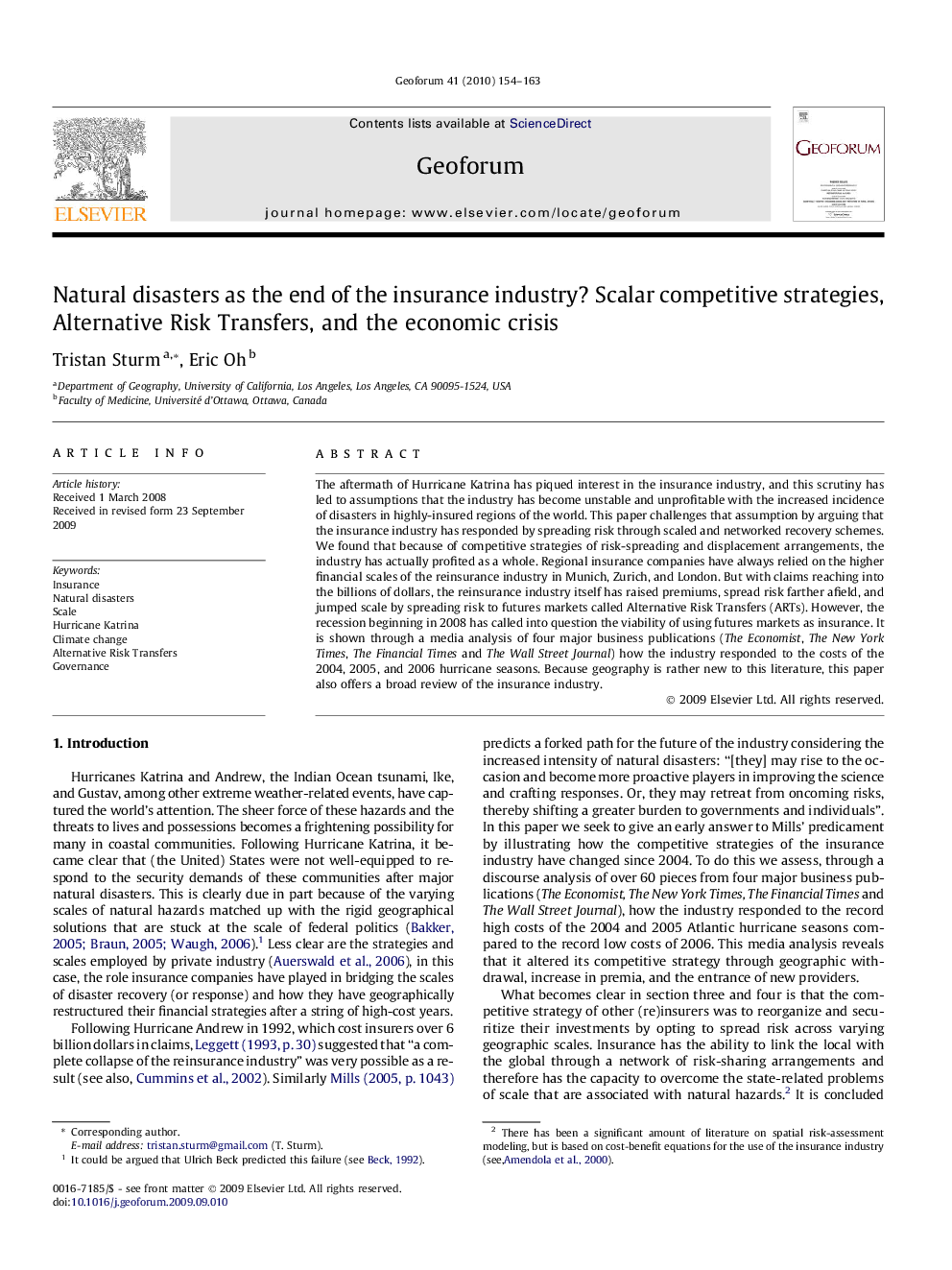| Article ID | Journal | Published Year | Pages | File Type |
|---|---|---|---|---|
| 5074639 | Geoforum | 2010 | 10 Pages |
Abstract
The aftermath of Hurricane Katrina has piqued interest in the insurance industry, and this scrutiny has led to assumptions that the industry has become unstable and unprofitable with the increased incidence of disasters in highly-insured regions of the world. This paper challenges that assumption by arguing that the insurance industry has responded by spreading risk through scaled and networked recovery schemes. We found that because of competitive strategies of risk-spreading and displacement arrangements, the industry has actually profited as a whole. Regional insurance companies have always relied on the higher financial scales of the reinsurance industry in Munich, Zurich, and London. But with claims reaching into the billions of dollars, the reinsurance industry itself has raised premiums, spread risk farther afield, and jumped scale by spreading risk to futures markets called Alternative Risk Transfers (ARTs). However, the recession beginning in 2008 has called into question the viability of using futures markets as insurance. It is shown through a media analysis of four major business publications (The Economist, The New York Times, The Financial Times and The Wall Street Journal) how the industry responded to the costs of the 2004, 2005, and 2006 hurricane seasons. Because geography is rather new to this literature, this paper also offers a broad review of the insurance industry.
Related Topics
Social Sciences and Humanities
Economics, Econometrics and Finance
Economics and Econometrics
Authors
Tristan Sturm, Eric Oh,
